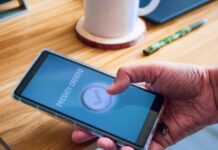Internet service providers have reported that internet use has increased by 70 percent over the past month, as almost everyone around the country shutters themselves at home and turns to the web for work, school, and entertainment. It is mind-boggling and wonderful that we are able to thwart disease and maintain some degree of productivity and connectivity — but we shouldn’t forget that the internet is a wild and sometimes dangerous place, and relying heavily on it without caution will result in serious trouble.
Since the new coronavirus emerged, dozens of new digital threats have developed online to capitalize on the uncertainty and fear plaguing the world’s populations. Here are a few of the most noteworthy threats home users should be aware of and how to stay as safe and productive as possible during this period of sheltering in place.
 Phishing Attacks
Phishing Attacks
One of the oldest methods of cyber attack that still works astoundingly well is phishing. Phishing entails crafting messages designed to entice web users to click links, write messages back, or otherwise engage with cybercriminals interested in stealing data or obtaining access to users’ devices. Often, these messages are fraudulent in some way; sometimes, they purport to come from a user’s friend or family member, and sometimes they contain false information about a popular subject.
The rampant fear and uncertainty due to COVID-19 have led many web users to engage with almost any content on the virus and disease — giving cybercriminals an excellent opportunity to launch widespread and extremely effective phishing campaigns.
The World Health Organization (WHO) is calling the current state of the internet an “infodemic,” where there is almost too much information about the disease online and much of it is intentionally or obliviously incorrect. Web users need to be careful with regards to which coronavirus messages they trust; most info should be independently verified on reliable news websites, especially WHO, CDC, NIH, and other health-oriented outlets.
Users should be wary of information from small or biased websites, and they should avoid interacting at all with emails or social media messages on the subject. This is doubly true if the messages ask users to submit personal information or download anything to their device.
Ransomware
Unfortunately, successful phishing attacks can result in ransomware, which is another cyberattack on the rise. Ransomware is malware that hijacks a device, hiding or encrypting files and demanding some sort of action from users, most often payment. Sometimes, ransomware pretends to be some kind of legitimate program, like antivirus virus software requiring payment for an update or a government agency exacting a fine for some sort of improper digital behavior, and users can easily be tricked into paying a ransom.
No truly legitimate software or service will lock down a device and demand a payment, especially in cryptocurrency. Users should avoid the temptation to pay the ransom; instead, they should prepare for potential ransomware attacks by knowing where to find a ransomware removal program and backing up their data to the cloud or to an external hard drive. Then, if ransomware does hit, users can quickly and easily overcome the threat.
Wiper Malware
Potentially the biggest digital coronavirus-themed threat affecting home users today is a
wiper malware calling itself Coronavirus. Wiper malware is a particularly malevolent class of programs designed to delete everything off the hard drive of the device it infects. Unlike ransomware, wipers leave users remarkably little recourse in recovering from their infection unless they are already prepared with recent backups.
The Coronavirus malware utilizes people’s automatic panic surrounding the name of the virus and their own helplessness in combatting the disease. Once successfully deployed on a victim’s device, the malware displays an image of SARS-CoV-2, a message reading, “Coronavirus has infected your PC!” and two buttons: “remove virus” and “help.”
Neither of the buttons does anything; victims don’t even have the option of paying a ransom to stop the trashing of their device. In a matter of minutes, the image of the virus is replaced with a gray screen informing users that their computer is no longer operable.
This wiper malware tends to sneak its way onto user devices in the typical methods used by most malware: through corrupt downloads attached to emails or available on third-party sites. Users should be able to avoid this threat by practicing
cyber hygiene and by maintaining a robust browser security suite.
Wrapping it Up:
Home web users shouldn’t assume that they are safe because they are using their personal devices and networks for work or school; in fact, their increased internet use puts them at greater risk for contracting some kind of digital disease. By taking the right steps to protect their devices and data, users can keep every aspect of their life and loved ones safe from coronavirus-related threats.
 Phishing Attacks
Phishing Attacks
















